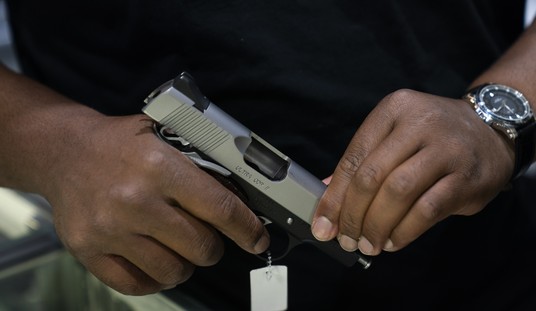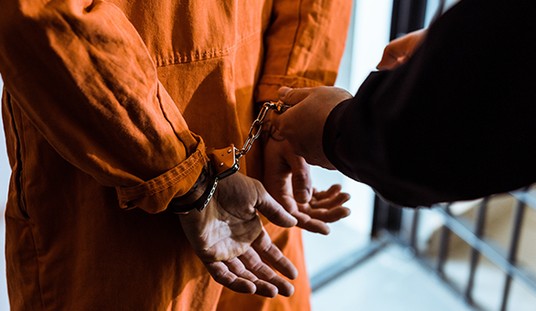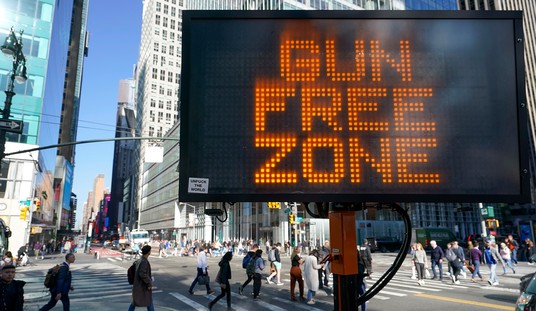It's easy to blame history for the issues of today. A lot of times, it may well be true, but the past generally can't answer for itself, which also makes it a convenient scapegoat.
But, as I said, sometimes, it's accurate to blame the past for the problems of today.
This came up recently when I watched a video by King Trout, who is probably best known for his hilarious shorts, many of which are explicitly pro-gun. He also makes long-form content, though, and those tend to be pretty good, if a bit wild.
Last week, he put out a video about a dude named Thomas Midgey Jr that was downright fascinating. Midgey is the guy who put lead in gasoline, which we'll get to in a minute, and invented freon, which ripped a hole in the ozone layer.
He's like an evil genius who didn't mean to be evil.
Yet in the video, Trout touches on something I didn't really think about. See, lead from that gasoline had to go somewhere, and that has led to a lot of problems, which he gets into, including one of particular interest to us here at Bearing Arms.
Now, the whole video is interesting, and I think you should watch the whole thing, but let's focus on the claim that lead exposure from leaded gasoline correlates to violent crime rates in such a way.
Seems kind of out there, to some degree. Yet, there's really something there. It's likely to remain a hypothesis because there's really no way to ethically experiment enough for it to even rise to the level of a theory, but it makes a lot of sense all on its own. Inner cities had a lot of cars driving up and down the streets, and with leaded exhaust, it stands to reason that we'd see a lot more lead exposure.
Plus, let's remember that leaded gasoline isn't the only source of lead. It was included in all sorts of things at different times, even cosmetics.
So we've long known there was a correlation between low-income communities and violent crime. In fact, this is why we tend to look at income as a potential factor in driving someone toward criminality.
Yet guess what you find in low-income communities? That's right, lead exposure.
In the U.S., individuals may be exposed to lead through multiple sources in their home or environment. Homes built before 1978 — when the federal government banned consumer uses of lead-based paint — likely contain lead-based paint, which may create lead dust when it peels or cracks. Older homes also may have pipes, faucets, and plumbing fixtures containing lead. Moreover, at least 6 million lead service lines exist in water delivery infrastructure, schools, and businesses. Lead can also be found in some products, such as toys and jewelry and in some imported food or medicine. Other sources of lead exposure may include certain jobs, such as manufacturing or construction, and/or contaminated soil.
...
Who is at increased risk for lead exposure?
Disparities in lead exposure persist for lower-income households and neighborhoods and children of color. Data show that although Healthy People 2020 objectives to reduce overall blood levels in children have been exceeded, Black children and those living in households with incomes below 130% of the federal poverty level (FPL) remain at increased risk for exposure (Figure 1). Data were not reported for other broad racial/ethnic groups. Other research has found higher proportions of detectable and elevated blood lead levels among children with public insurance, who are more likely to be low income and found the share of children with elevated blood levels increased as degree of poverty increased. Similarly, research show that areas with higher blood lead levels are associated with low home ownership, high poverty, and residents who are a majority people of color. Some research also suggests some groups of Hispanic and Asian children are at increased risk for lead exposure. Similar patterns are observed among pregnant women, with studies finding higher levels of lead among Black and Hispanic women compared to White women, as well as higher levels among women residing in areas with higher crime, greater diversity, lower educational attainment, lower household income, and higher poverty. Lead poisoning also disproportionately affects refugee and other immigrant children due to both environmental exposures, such as resettling in pre-1978 housing, and potential exposure through cultural practices, traditional medicines, and consumer products. For example, refugees and other newcomer populations may use or consume imported products contaminated with lead, such as traditional remedies, herbal supplements, spices, candies with lead in the wrappers, cosmetics, or jewelry. Indigenous people may also be at increased risk of being exposed to lead through certain traditional practices, such as lead contamination of plants and animals in traditional diets, and older housing.
Now, I've long argued that violent crime is a complex issue that we need to look at beyond some simple platitudes about gun control. Part of that is that we've got a higher non-gun homicide rate than most developed nations, which means even if guns vanished tomorrow, we'd still have a big violent crime issue that wouldn't go away.
We're never going to deal with it unless we start looking at the roots of violent crime as a whole.
This, however, suggests that there are environmental issues that could be at the root of much of the problem. Low-income communities are far more likely to have lead exposure, which creates systemic and generational issues such as educational outcomes and criminality, including violent crime.
This would explain why you find a high violent crime rate in both Chicago and parts of rural Mississippi, despite the fact that those two areas have absolutely nothing in common.
What's more, this should be something all sides of the political divide can rally together to address. It won't stop the anti-gun agenda, but in time, it'll make it a much harder sell to the American public when violent crime rates drop even more despite no new gun control.
Just sayin'.
Editor’s Note: President Trump and Republicans across the country are doing everything they can to protect our Second Amendment rights and right to self-defense.
Help us continue to report on their efforts and legislative successes. Join Bearing Arms VIP and use promo code FIGHT to get 60% off your VIP membership.








Join the conversation as a VIP Member